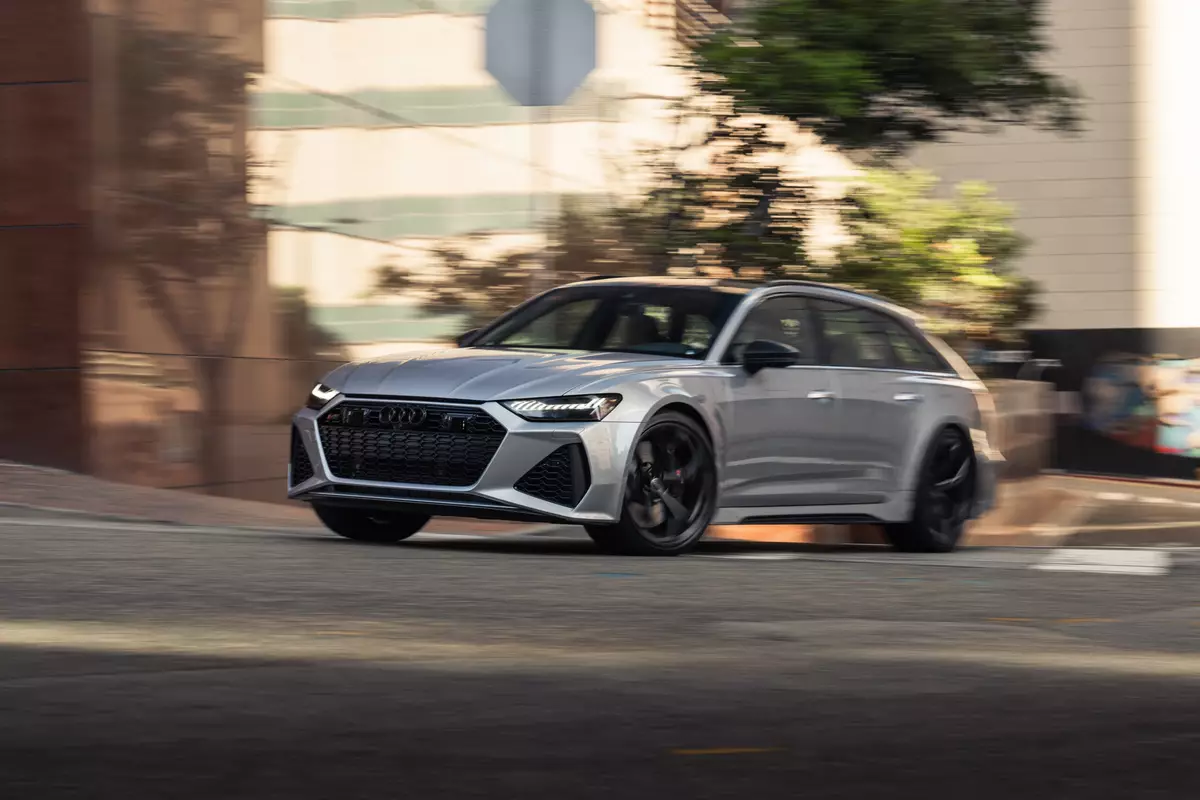Updated 2020 Honda Ridgeline Goes Off-Roading
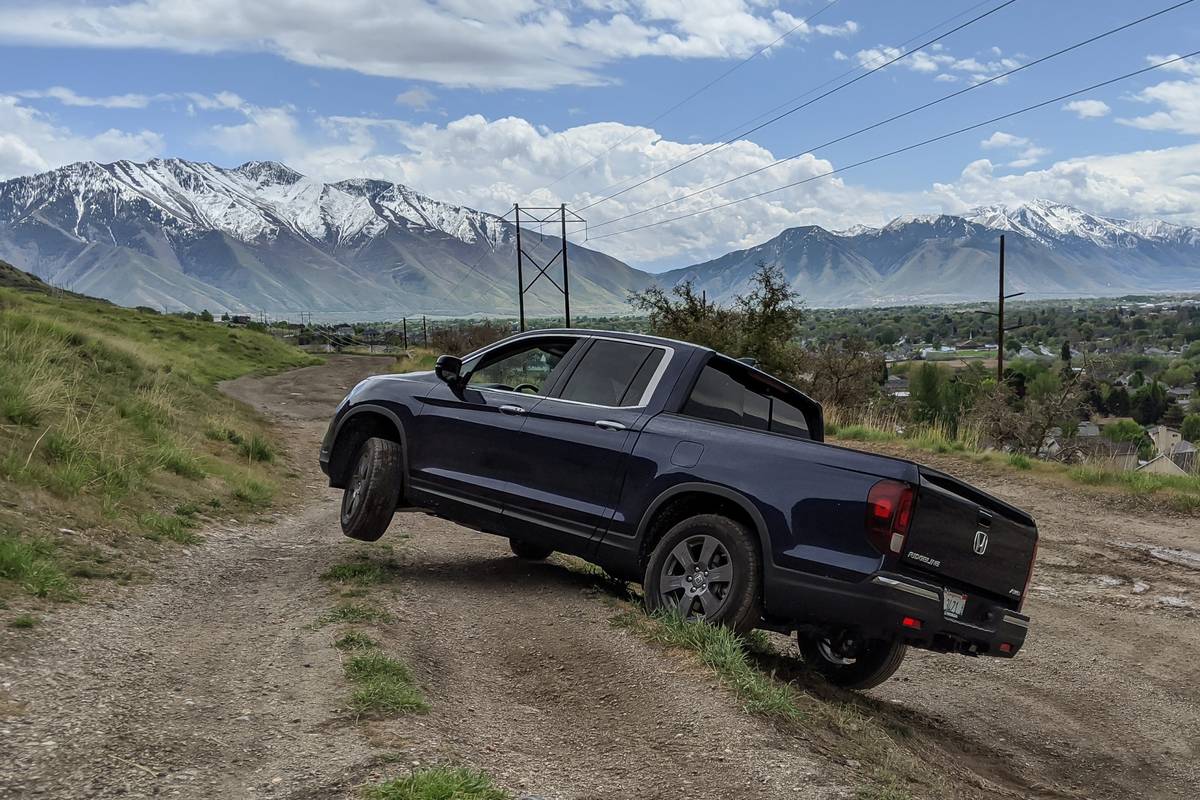
What makes a truck a truck? Is it a low-range transfer case? Maybe it’s a body-on-frame design. For whatever reason, the Honda Ridgeline gets written off as not being a real truck and not being able to do truck things. One aspect many people look for in a truck is off-road capability, so how does the Ridgeline hold up when the going gets tough?
Related: 2020 Honda Ridgeline: Which Should You Buy, 2019 or 2020?
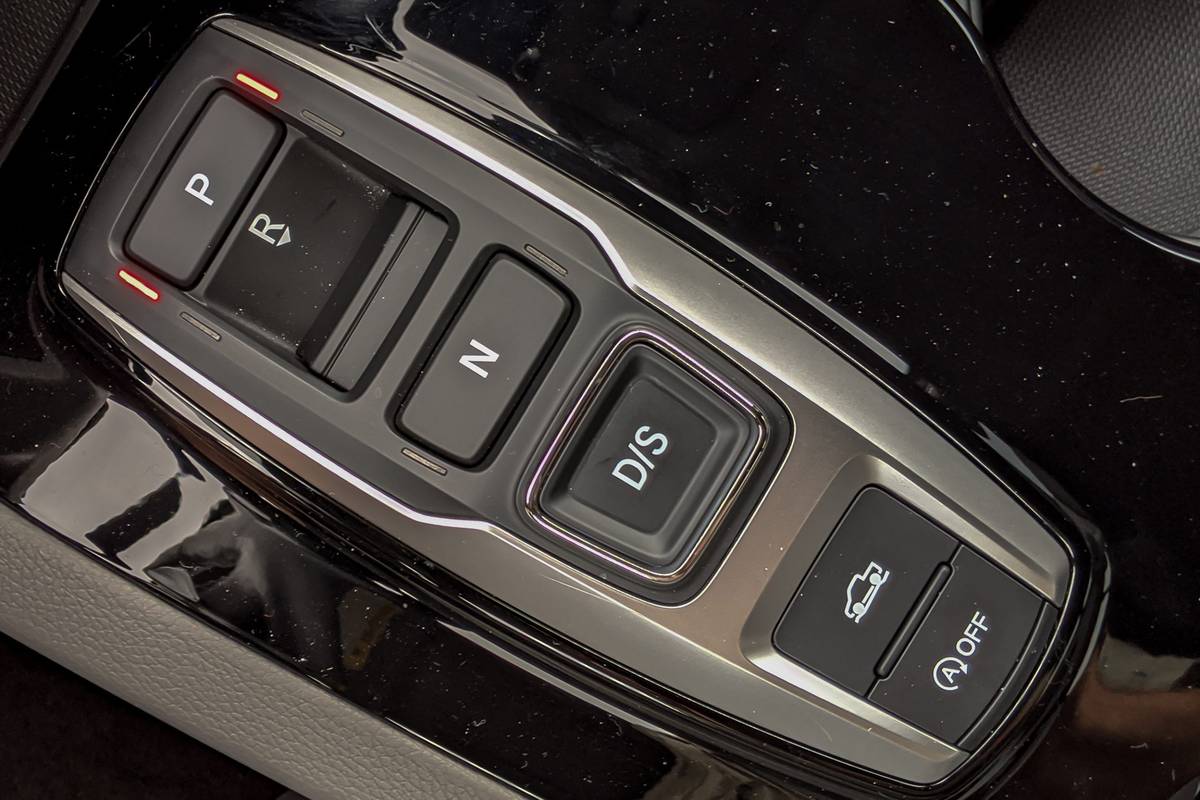
The 2020 Honda Ridgeline has a few small updates and one notable one. The big update is the nine-speed automatic transmission, which is up from the six-speed used in 2019. The new transmission ratios and final-drive ratio have changed the crawl ratio from 14:1 in 2019 to 20:1 in 2020, which means the 2020 Ridgeline is able to accelerate quicker and climb steeper grades without as much effort as its predecessor. To determine just how capable the Ridgeline is off-road, I put a Ridgeline RTL-E through my normal battery of off-road tests:
- A medium-speed rough-road run to see how the suspension handles bumps and dips when traveling maintained dirt and gravel roads.
- An articulation test on a small hill that demonstrates how the traction systems respond when two wheels lose traction.
- A steep hill climb where traction is lost on two wheels. If the vehicle can’t climb the steep hill with two wheels losing traction, I then take an easier line up the hill where all four wheels remain firmly on the ground.
How the Honda Ridgeline’s All-Wheel Drive Works
Honda calls its AWD system iVTM-4, which stands for Intelligent Variable Torque Management all-wheel drive. This system is front-wheel-drive based with a torque transfer unit that sends power to the rear. The rear axle is overdriven by 2.7% and has a ring-and-pinion gear that connects to the rear axle shafts via a clutch pack on each axle shaft. This allows the Ridgeline to torque vector by moving the outside rear wheel faster than the other wheels, effectively pushing the vehicle around corners. With both rear clutch packs fully engaged, the system simulates a locked rear differential.
Along with the dual-clutch rear axle, there are four drive modes in the Ridgeline that adjust throttle sensitivity and traction, and stability control inputs:
Normal
Used for everyday driving, this mode optimizes fuel economy but adjusts based on throttle, steering and braking inputs to improve driving performance. Power is sent only to the front wheels during cruising but can be transferred to the rear during acceleration, cornering or when slip is detected.
Snow
This mode reduces throttle sensitivity and increases the amount of power sent to the rear axle. This decreases the likelihood of losing traction on slippery terrain.
Mud
Select Mud and throttle sensitivity increases while reducing the input of the stability and traction control systems. This allows for more wheel spin without reducing engine power or applying the antilock braking system to the spinning wheels. This helps maintain momentum.
Sand
Using Sand mode increases throttle sensitivity while reducing the input of the stability and traction control systems. This mode has the least input from the stability and traction control systems of all the drive modes.
One other Ridgeline feature is the ability to turn off traction control via a dash button to the left of the steering wheel.
Find a Honda Ridgeline for Sale Near You
Dirt and Gravel Road
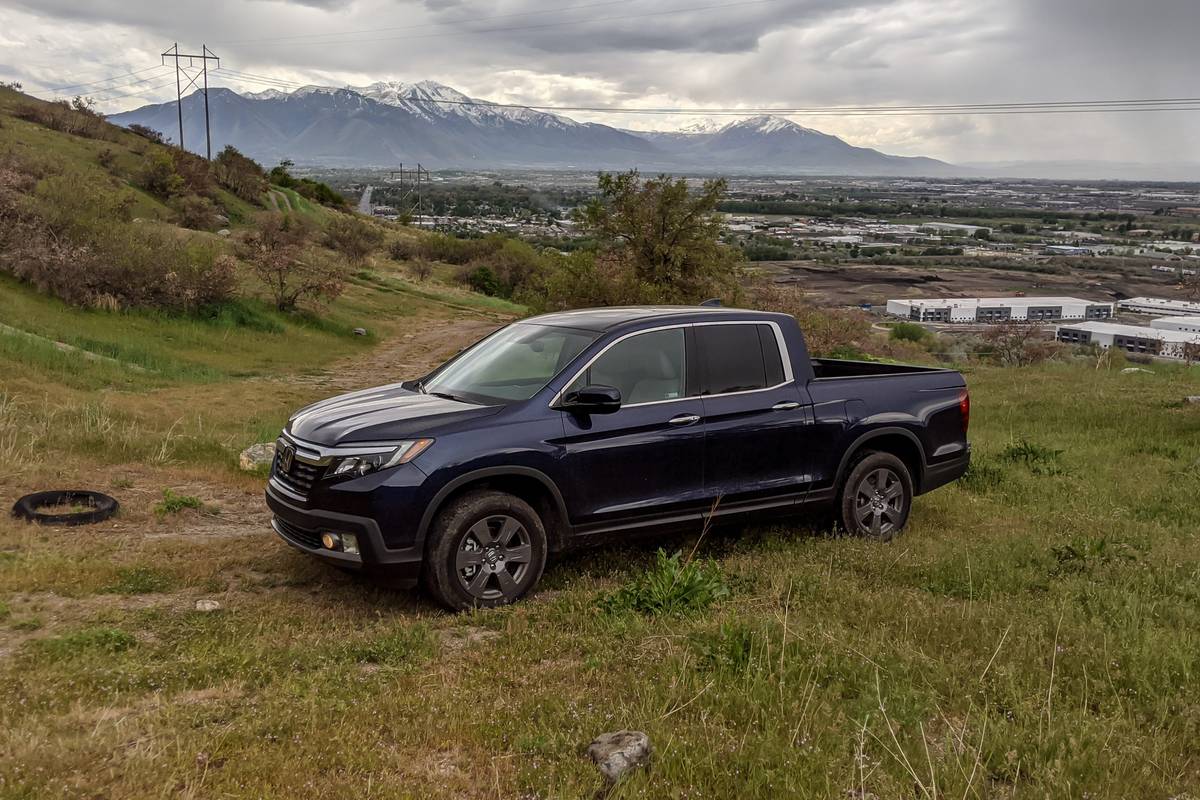
A fully independent suspension is a great feature for medium- to high-speed driving off pavement. When one wheel hits a bump or dip, the force isn’t transferred to the other wheel like a solid axle. This increases stability and improves the ride. The downside to most factory independent suspension systems is a lack of travel, which can make large hits harsher when compared to a vehicle with solid axles and more suspension travel. The Ridgeline fits this generalization perfectly by maintaining a smooth and composed ride over the smaller road imperfections but getting a little rough on the larger ones.
The Ridgeline’s AWD does a great job of transferring power where it needs to go in order to keep the Ridgeline under control. This isn’t a vehicle that will drift easily on high-speed gravel corners, but the trade-off is that it almost always goes exactly where you point it.
Articulation Hill
On the articulation hill, I tested all the different drive modes to see how they controlled the spinning wheels and how the throttle responded to inputs. Each mode worked as described, with the Snow mode requiring more throttle input, and the Mud and Sand modes requiring less throttle input. It felt like Sand mode allowed for a little more wheel spin before applying the brakes to the spinning wheels but not significantly more.
The articulation hill was small enough and flat enough that the iVTM-4 system was able to get power where it needed to by mostly using the clutches and only requiring a little bit of braking force on the spinning wheels.
Steep Grade
I was excited to see what the gearing changes for 2020 would bring to the steep hill’s hardest line. I was impressed to say the least.
Taking the hardest line where two wheels completely lose traction slowed the Ridgeline down a little, but by applying a bit more throttle it was able to make the climb without drama. I repeated this process with each of the drive modes and each time the results were nearly the same. With Snow mode, more throttle input was required. With Mud and Sand modes less throttle input was required, but there was a little more wheel spin.
After testing all the drive modes on the steep hill, which approaches a 70% grade at its max, I attempted the climb with traction control turned off. In some vehicles, traction control off means only a slight reduction in traction control, but I was pleased to find in the Ridgeline that traction control off actually means off. Without the extra traction from applying the brakes to the spinning wheels, the clutch packs weren’t able to transfer enough power side to side on the rear axle to make the climb. This also put additional heat into the clutch packs from the extra slipping, and caused the system to produce an overheat warning. While this appears to be a bad thing, the warning is there to protect the iVTM-4 system from damage. After waiting a few minutes, the system cooled down enough to resume driving.
Can You Off-Road in the Honda Ridgeline?
Don’t write the Ridgeline off as useless or not a capable truck. It has more interior room than the other mid-size trucks, which helps it feel more comfortable. The bed has additional storage with the in-bed trunk, and it is just as big if not bigger than the competitors. Off-road, the iVTM-4 system does an excellent job and is just as capable, if not more capable, than all but the off-road trim-level trucks in this class.
Cars.com’s Editorial department is your source for automotive news and reviews. In line with Cars.com’s long-standing ethics policy, editors and reviewers don’t accept gifts or free trips from automakers. The Editorial department is independent of Cars.com’s advertising, sales and sponsored content departments.
Featured stories
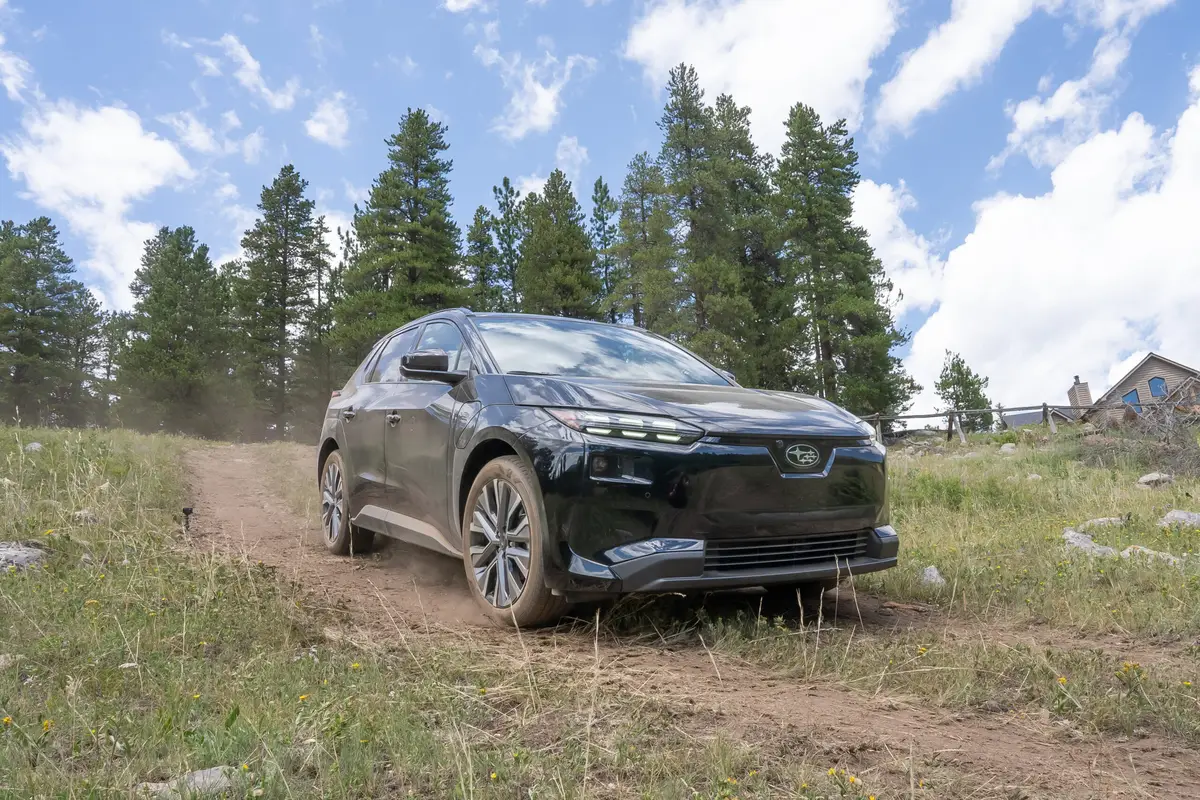
2026 Subaru Solterra Review: Necessary Improvements

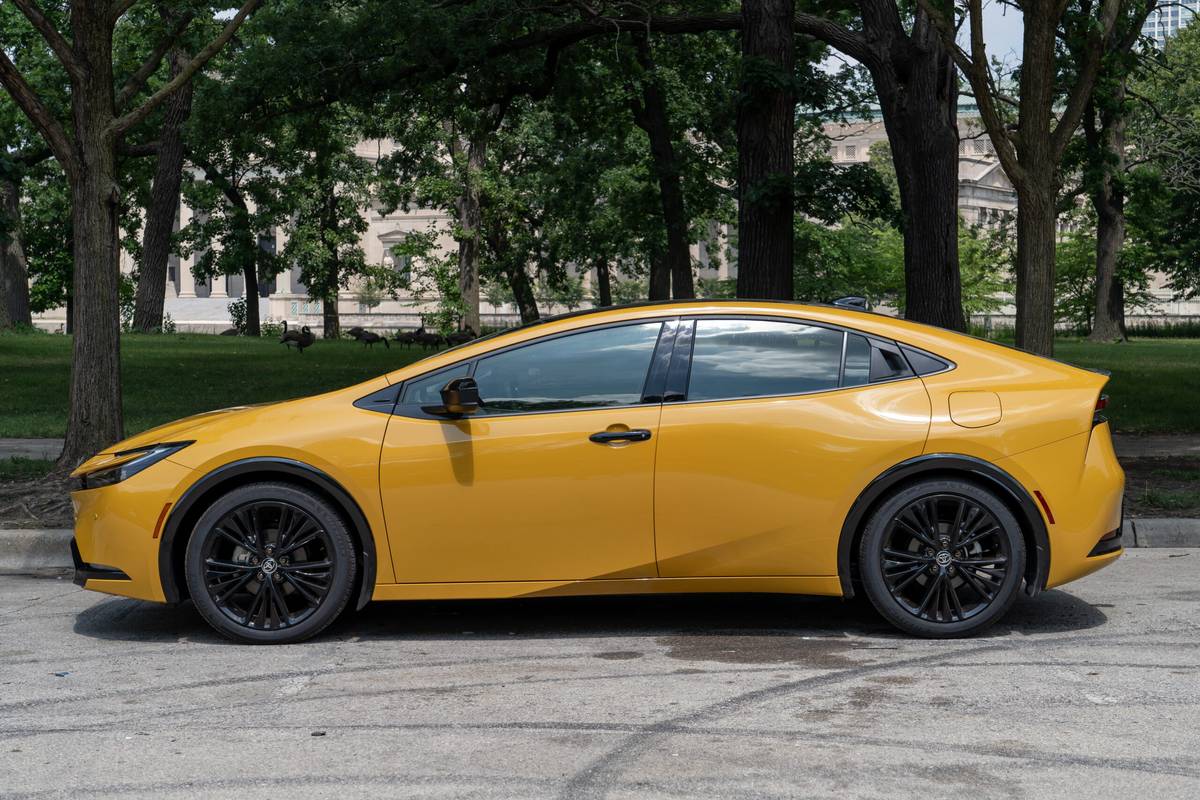
2025 Toyota Prius Review: Big on Mileage, Small on Space

